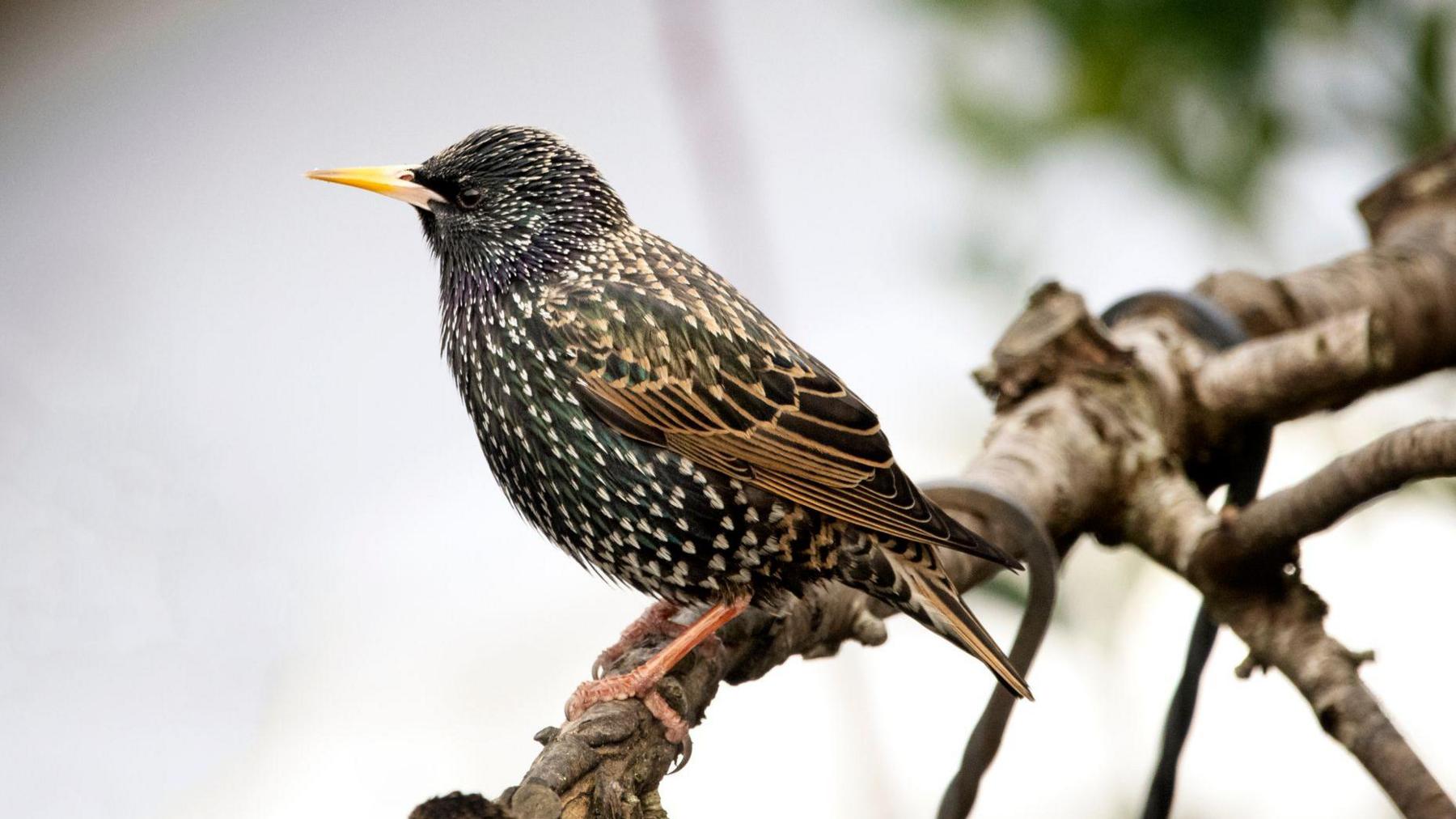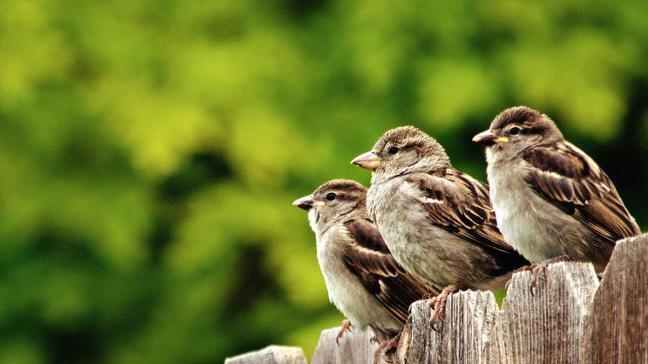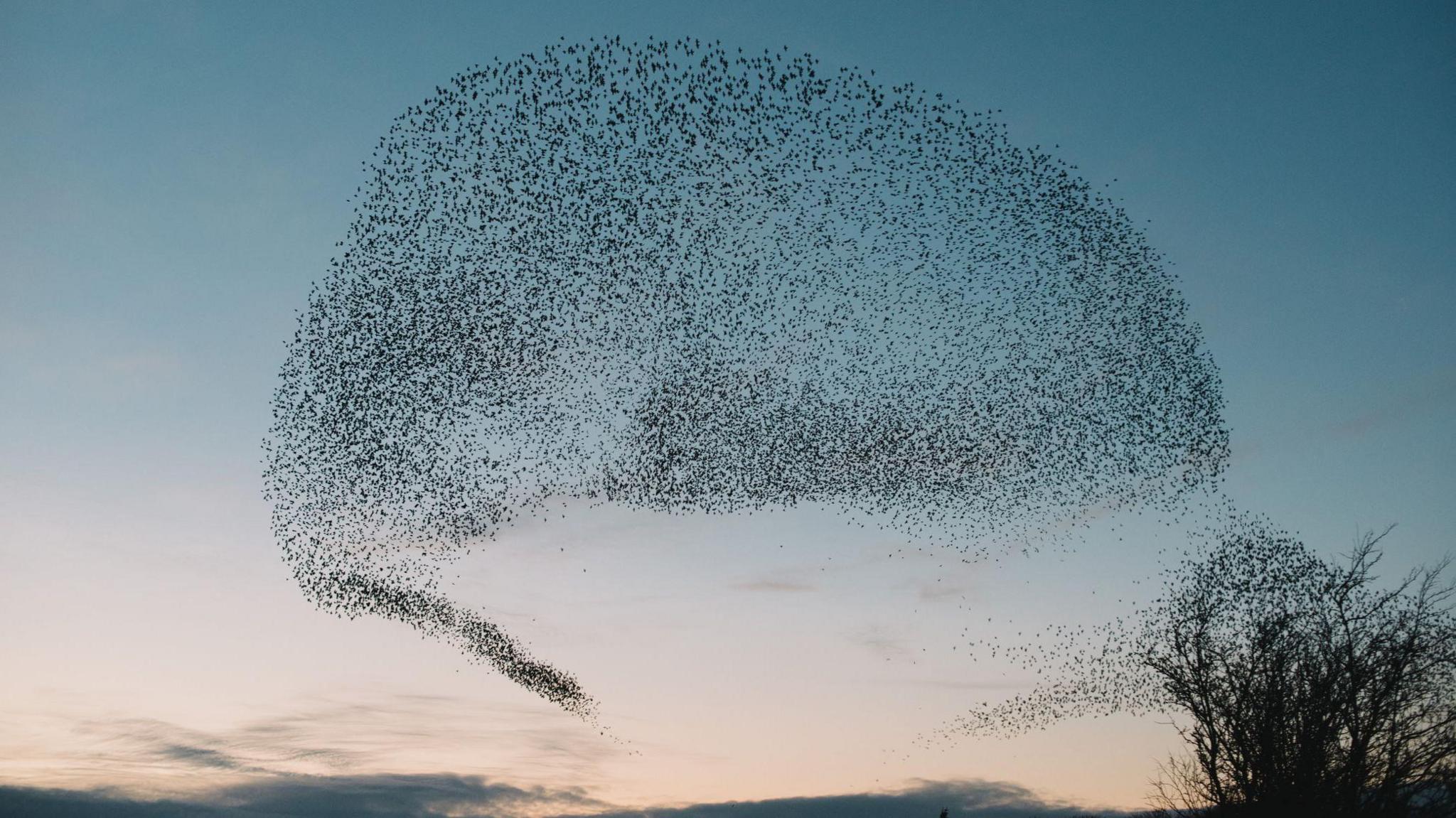Big Garden Birdwatch: Why are people worried about starlings?

Starlings used to be the most commonly spotted bird in the UK - but this year the lowest numbers ever were recorded
- Published
Did you take part in this year's Big Garden Birdwatch?
Almost 600,000 people across the UK took part this year, counting more than nine million birds.
Starlings have dropped out of UK's top three garden birds with the lowest number ever being recorded.
House sparrows have held onto top spot as the most spotted bird in UK gardens, with the blue tit holding onto the number two spot from last year.
Woodpigeons and blackbirds were also among the top five most recorded species in UK gardens.
Big Garden Birdwatch 2025: How can you take part?
- Published26 January
Birds to enjoy during a daily walk
- Published14 April 2020
The Big Garden Birdwatch is the world's largest garden wildlife survey, which first began back in 1979.
The results show how much-loved garden birds in the UK are doing and what we can do to help birds and nature.
People taking part are asked to count the number of each species they spotted in gardens, parks or other green spaces during a one-hour period over the last weekend in January.

House sparrows have been the most spotted bird this year
Should we be worried about starling numbers falling?
Starlings are medium-sized birds that have shiny feathers with a purple and green sheen, and often with white spots during winter.
They are also excellent mimics and can make a huge variety of tweets, cheeps and clicks.
They can be found across the UK with the largest numbers seen during winter when birds arrive from Northern Europe.
You might have even seem them gathering together to perform spectacular displays in the sky called murmurations.
But despite these displays sometimes reaching hundreds of thousands of birds, starlings are a red listed species in the UK.
This means they are a high conservation concern because their numbers are falling.
Before the year 2000, starlings were one of the most numerous species recorded in the Big Garden Birdwatch.

Starlings are known for gathering in massive groups to form a murmuration like this
What can we do to help starlings?
The RSPB's Chief Executive, Beccy Speight said: "With one in six species at risk of extinction from Great Britain, we've done more damage to our natural world than we realise. "
"However, we can all do our bit to support these threatened birds by taking small actions that can not only benefit Starlings, but a wealth of other garden wildlife."
Here are some top tips to help starlings:
1. Avoid the use of pesticides - these are chemicals used on plants to stop them being damaged by bugs and insects, but can cause harm to other animals too
2. If you have a garden, keeping a natural lawn, rather than paving, plastic grass or astroturf - this allows starlings to forage for insects
3. Put up bird boxes which provide starlings with a ready made nesting site. A box with a 45mm entrance hole is the ideal size for these birds.
